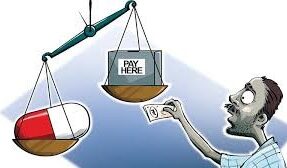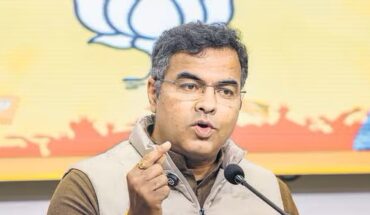Partial similarity of the title used in this article to ‘A Brief History of Time’ by Stephen W. Hawking is intentional as it attempts to present the history of drug price control in India but not in non-technical terms as Hawking’s work presented the structure, origin, development, and eventual fate of the Universe.
In India, the Drugs and Cosmetics Act, 1940 regulates the import, manufacture, distribution and sale of drugs and cosmetics. Section 3(b) of the Act defines the drug that includes (i) all medicines for internal or external use of human beings or animals and all substances intended to be used for or in the diagnosis, treatment, mitigation or prevention of any disease or disorder in human beings or animals, including preparations applied on human body for the purpose of repelling insects like mosquitoes; (ii) such substances (other than food) intended to affect the structure or any function of the human body or intended to be used for the destruction of vermin or insects which cause disease in human beings or animals, as may be specified from time to time by the Central Government by notification in the Official Gazette; (iii) all substances intended for use as components of a drug including empty gelatin capsules; and (iv) such devices intended for internal or external use in the diagnosis, treatment, mitigation or prevention of disease or disorder in human beings or animals, as may be specified from time to time by the Central Government by notification in the Official Gazette, after consultation with the Board.
This background is necessary as this forms the sphere of influence under Drug Price Control. In the wake of the Indo-Chinese War, the Drugs (Control of Prices) Order, 1963 was issued to cap drug costs. This Order was issued under the provisions of the Defence of India Act of 1915. Main aim of this Order was to make pharmaceuticals affordable and available. Pharmaceutical industry was critical of the freeze order on the ground that the prices of relevant APIs were not frozen. In 1966, a system was put in place that permitted selective increases thereby replacing total freeze. Additionally, 18 essential drugs were identified and referred to the Tariff Commission for examining the ‘cost structure’ and recommending ‘fair selling prices.’ The Drugs Prices (Display & Control) Order was notified in 1966 (NPPA full book, p.31). Manufacturers of pharmaceutical products were under obligation to obtain prior approval of the Government before increasing the prices of all formulations in their lists as on June 30, 1966. In August 1968, generic drugs were exempted from price approval.
The Drug (Prices Control) Order 1970 was issued under Section 3 of the Essential Commodities Act, 1955. This was aimed at lowering the prices of essential pharmaceuticals by limiting excessive profits. The Government of India constituted a committee under the chairmanship of Sh. Jaisukhlal Hathi, Member of Parliament, in 1974 which submitted its report titled, ‘Report of the Committee on Drugs and Pharmaceutical Industry’ (popularly known as Hathi Committee Report) in 1975. Out of 224 recommendations, a key recommendation was about introduction of a list of essential medicines. 44 drugs derived from synthetic sources were identified as essential drugs by the Committee, and overall 116 essential drugs were listed.
The first Drug Policy of India was formulated in March 1978. This was followed by the Drugs (Price Control) Order, 1979 under which bulk drugs as well as formulations were classified as scheduled and non-scheduled. For scheduled formulations (about 4,000 in number), retail price was to be determined by using ‘mark-ups’ over material and other costs. In contrast to this, maximum selling prices of regulated bulk drugs (347 in number) was to be determined by taking into consideration stipulated rates of return on net worth/capital employed.
Due to different mark-ups, pharmaceutical business entities curtailed production in those categories which offered lower allowable mark-ups. In this background, a committee – Kelkar Committee (named after Sh. Vijay Kelkar) was constituted in 1984 which recommended the reduction in the number of drugs under price control. This was followed by the Drug Policy, 1986 and DPCO, 1987. Under DPCO, 1987 the number of regulated bulk drugs came down to 142. Two key arguments, i.e., India becoming one of the cheapest drug makers in the world since the early 1980s, and the rate of increase of drug prices being lower than general price level, formed the basis for reduction in the number of drugs under price control.
Economic reforms of 1991 resulted into modification of the Drug Policy of 1986. In 1995, new DPCO was announced under which just 74 bulk drugs remained under price control. The criteria applied included market competition and annual turnover. In 1997, the National Pharmaceutical Pricing Authority (NPPA) was formed and the task of price fixation, revision and other related matters for bulk drugs and formulations were transferred to NPPA which used to be dealt by the Bureau of Industrial Costs & Prices (BICP) earlier.
In March, 1999 the Government constituted a Drug Price Control Review Committee (DPCRC) to review the existing drug price control mechanism and to suggest alternate models, if any, with a view to reducing the rigours of price control where they had become counter-productive.
On December 7, 2012 the National Pharmaceutical Pricing Policy (NPPP, 2012) was announced. The National List of Essential Medicines (NLEM) – 2011 and the Report of Task Force headed by Dr. Pronab Sen formed the basis of NPPP, 2012. Task Force headed by Dr. Sen had the mandate to “Explore Options other than Price Control for Achieving the Objectives of Making Available Life-saving Drugs at Reasonable Prices.”

By 2005, the number of bulk drugs under price control came down to 74. It was realized that the DPCO, 1995 overly focused on the bulk drugs and affected the bulk drug manufacturers so several bulk drugs went out of production due to such price controls. Another major development during this period was related to shift from process patent regime to product patent regime due to obligations under TRIPS.
Post NPPP, 2012 the DPCO, 2013 was issued which adopted ‘market-based approach’ as against ‘cost-based approach’ followed earlier. It should be seen in the light of the Task Force headed by Dr. Sen which had recommended that price regulations should be applied only to formulations and not to upstream products (e.g., bulk drugs). Further, it was recommended that the ceiling prices of regulated drugs should normally not be based on cost of production, but on readily monitorable market-based benchmarks. Recommendation to the government was to announce the ceiling price of all formulations based on 354 drugs (APIs and fixed-dose combinations) contained in the National List of Essential Medicines (NLEM), 2003.
Formulations listed in Schedule-I of the DPCO, 2013 were defined as scheduled formulations (Section 2(1)(zb) of the DPCO, 2013) and those not included in Schedule-I were termed non-scheduled formulations. Ceiling prices of scheduled medicines are revised annually on the basis of Wholesale Price Index (WPI) (all commodities for preceding calendar year by the National Pharmaceutical Pricing Authority (NPPA), on or before April 1 of every year. For non-scheduled formulation whether branded or generic, as per para 20 of the DPCO, 2013, no manufacturers can increase Maximum Retail Price by more than 10% of MRP during preceding 12 months.
Schedule-I of DPCO, 2013 was amended through adoption of NLEM, 2015 that consisted 377 medicines. By July 2021 the NPPA had fixed ceiling prices of 355 medicines and 882 formulations for medicines under NLEM, 2015 and the number went up to 890 scheduled formulations of medicines by June 30, 2022. Additionally, the NPPA had fixed retail price (applicable only to the applicant manufacturing/marketing companies) of 2,023 new drugs under DPCO, 2013 by June 30, 2022 and this number went up to 2,607 by December 29, 2023. The NPPA had also fixed ceiling prices of Stents (February 2017), Knee Implants (August, 2017), and capped trade margin on selected 42 anti-cancer drugs (February, 2019). By December 29, 2023 the NPPA had fixed the ceiling prices of 915 formulations comprising 700 formulations under NLEM 2022 and 215 formulations under NLEM 2015 and ceiling prices of 131 anti-cancer formulations were effective. Due to the fixation of ceiling prices of scheduled formulations listed in NLEM 2022 alone, the consumers saved Rs. 3,588 crore.
Dr. Anil Kumar Angrish- Associate Professor (Finance and Accounting), Department of Pharmaceutical Management, NIPER S.A.S. Nagar (Mohali), Punjab
Disclaimer: Views are personal and do not represent the views of the Institute.






